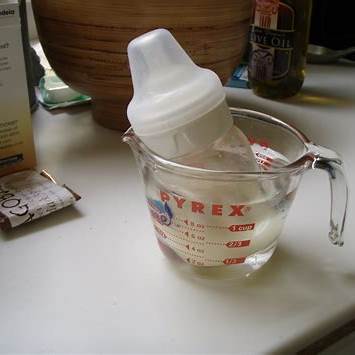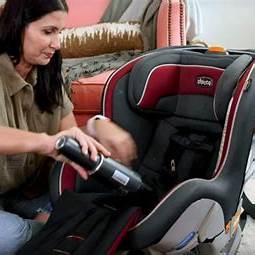Warming baby milk without a microwave is a common concern for parents aiming to preserve the milk’s nutrients and ensure their baby’s safety. Microwaves can create hot spots and degrade essential nutrients in breast milk or formula. Fortunately, several effective and safe methods exist to warm baby milk using simple tools. This guide provides step-by-step instructions for each method, ensuring your baby’s milk is warmed gently and safely.
- Warm Water Bath Method
This traditional method is widely recommended for its simplicity and effectiveness.
Steps:
- Fill a Bowl or Basin: Use warm tap water, ensuring it’s not boiling. The water should be warm enough to heat the bottle but cool enough to place your hand in it comfortably.
- Place the Bottle: Submerge the sealed bottle of milk into the warm water, ensuring the water level is below the bottle’s neck to prevent water from entering the bottle.
- Wait and Swirl: Let the bottle sit for about 5-10 minutes. Occasionally swirl the bottle gently to distribute the heat evenly.
- Test the Temperature: Before feeding, test a few drops on your wrist. The milk should feel lukewarm, not hot.
This method is gentle and helps preserve the milk’s nutritional value. It’s also convenient when at home or in places where warm water is accessible.
- Running Warm Tap Water
Using warm tap water is a quick method, especially when you’re short on time.
Steps:
- Prepare the Bottle: Ensure the bottle is sealed tightly to prevent water from entering.
- Run Warm Water: Hold the bottle under warm running tap water, rotating it to ensure even warming.
- Duration: Continue for about 2-3 minutes or until the desired temperature is reached.
- Test Before Feeding: As always, test a few drops on your wrist to ensure it’s not too hot.
This method is efficient but may not be suitable in areas with limited water access or where water conservation is a concern.
- Using a Thermos or Insulated Bottle
For parents on the go, a thermos can be a lifesaver.
Steps:
- Prepare Hot Water: Before leaving home, fill a thermos with hot water.
- When Needed: Pour the hot water into a cup or bowl.
- Warm the Bottle: Place the baby’s milk bottle into the hot water, ensuring the water level is appropriate.
- Wait and Test: After a few minutes, test the milk’s temperature on your wrist.
This method is portable and doesn’t rely on electricity, making it ideal for travel or outings.
- Bottle Warmers
While this guide focuses on non-microwave methods, it’s worth mentioning bottle warmers as an alternative.
Usage:
- Follow Manufacturer’s Instructions: Each bottle warmer may have specific guidelines.
- Monitor Temperature: Ensure the milk doesn’t overheat, as excessive heat can destroy nutrients.
Bottle warmers are convenient but require an initial investment and access to electricity.
- Room Temperature Feeding
Some babies are comfortable with milk that’s at room temperature.
Steps:
- Remove from Refrigerator: Take the bottle out and let it sit until it reaches room temperature, typically 20-25°C (68-77°F).
- Duration: This can take about 30-60 minutes, depending on the ambient temperature.
- Test Before Feeding: Ensure the milk isn’t too cold or warm by testing a few drops on your wrist.
This method requires planning but eliminates the need for heating.
Safety Tips
- Avoid Microwaves: Microwaving can create hot spots and degrade essential nutrients.
- Never Boil Milk: Boiling can destroy beneficial properties in breast milk and formula.
- Always Test Temperature: Before feeding, test the milk’s temperature on your wrist to ensure it’s safe.
- Use Within Two Hours: Once warmed, use the milk within two hours to prevent bacterial growth.
Conclusion
Warming baby milk without a microwave is entirely feasible with various methods available to suit different situations. Whether at home or on the move, these techniques ensure your baby’s milk is warmed safely, preserving its nutritional value and ensuring your baby’s comfort.





